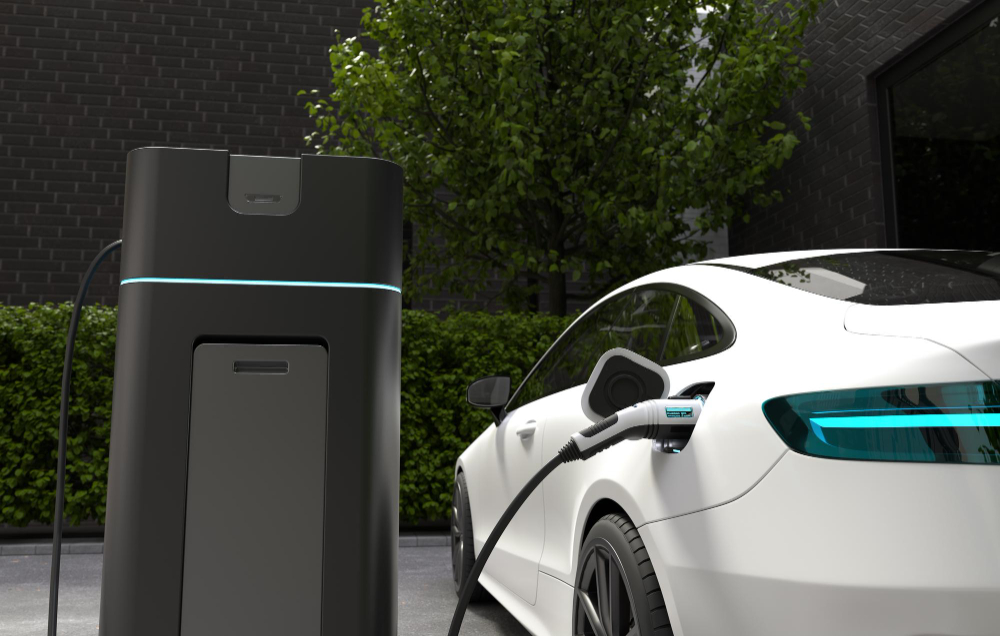Introduction to the "Energy Fusion Core" Conceptual EV Charging System

The subject of this analysis is a conceptual Printed Circuit Board (PCB) design titled “Unique ‘Energy Fusion Core’ Based Conceptual PCB Design”. This design, presented as an SVG image, outlines a sophisticated Electric Vehicle (EV) charging station architecture. The layout visually identifies various key functional zones, labeled in Bengali, indicating a system engineered to handle multiple power inputs and distribute energy to various EV charging outputs. These zones include the “Power Input & Conditioning Zone,” the “Central ‘Energy Fusion Core’ (EFC_X1),” the “EV Charge Control & Distribution Zone,” and the “Charging Dock Output Interface”.
At a high level, the system architecture is characterized by its multi-input capability, designed to accept power from an AC grid, solar panels (DC), and a turbine source (DC). All these inputs are directed towards the central EFC_X1 module. This module, in turn, energizes a distribution network that supplies power to three distinct EV charging docks. This architecture strongly suggests an advanced charging station conceptualized as a local energy hub, capable of leveraging diverse energy sources to provide flexible and potentially more resilient EV charging services. Such systems aim to optimize energy utilization and reduce reliance on a single energy source.
The “Energy Fusion Core” concept itself is significant. The term “fusion” implies more than just common aggregation of energy; it suggests an intelligent synthesis and dynamic management of power from these disparate inputs. This aligns with contemporary research in advanced EV charging solutions, such as DC microgrids or DC hubs, multi-port power converters, and the direct integration of renewable energy sources at the charging station level. The EFC_X1 is positioned as the nexus of this intelligent management, potentially capable of optimizing power flow based on source availability, cost, and EV charging demand.
It is critically important to acknowledge the disclaimer embedded within the PCB design: “Note: This is an advanced conceptual PCB layout, not for actual production. Traces and component placement are simplified”. This disclaimer sets the context for the current analysis: the primary focus is on elucidating the high-level functional architecture and system-level interactions, rather than a detailed circuit-level or physical layout review. The simplifications mean that specific component choices, precise trace routing, and detailed thermal or EMI/EMC considerations based on the visual layout are speculative. Instead, the design serves as a useful abstraction for discussing the opportunities and challenges inherent in such an integrated multi-source charging system.
The use of Bengali labels for zones and some components is a notable feature. While the reasons for this specific language choice are not provided, it could indicate a conceptual origin or an intended application context where such a system might address specific regional energy challenges, such as grid instability or a desire to promote local renewable resource utilization. Regardless of the specific linguistic choice, the underlying technological concepts are universally relevant to the advancement of EV charging technology. The conceptual simplifications, by abstracting away minute implementation details, effectively steer the discussion towards the larger functional blocks and their interdependencies, making it a valuable tool for exploring the system-level integration complexities of next-generation EV charging infrastructure.
Team
Our Driving Force - Our Dedicated Team
The success of “Shead Green Mobility and Renewable Technology OPC” is rooted in the collective efforts of a group of talented, enthusiastic, and dedicated individuals. Each member of our team is experienced in their respective fields and deeply committed to the company’s goals and philosophy. Besides the founder, our team includes technologists, engineers, marketing experts, and skilled managers who are working tirelessly to turn this green mobility revolution into reality.

MD Mohiminul Islam Shead
He is the hero behind "Shead Green Mobility and Renewable Technology private limited company"

Professor Dr. Md. Nurul Amin
Professor Dr. Md. Nurul Amin stands as a pivotal figure and visionary co-founder of Shead Green Mobility and Renewable Technology OPC (SMRT)

